Morteza Dorrigiv
An Explainable Nature-Inspired Framework for Monkeypox Diagnosis: Xception Features Combined with NGBoost and African Vultures Optimization Algorithm
Apr 24, 2025Abstract:The recent global spread of monkeypox, particularly in regions where it has not historically been prevalent, has raised significant public health concerns. Early and accurate diagnosis is critical for effective disease management and control. In response, this study proposes a novel deep learning-based framework for the automated detection of monkeypox from skin lesion images, leveraging the power of transfer learning, dimensionality reduction, and advanced machine learning techniques. We utilize the newly developed Monkeypox Skin Lesion Dataset (MSLD), which includes images of monkeypox, chickenpox, and measles, to train and evaluate our models. The proposed framework employs the Xception architecture for deep feature extraction, followed by Principal Component Analysis (PCA) for dimensionality reduction, and the Natural Gradient Boosting (NGBoost) algorithm for classification. To optimize the model's performance and generalization, we introduce the African Vultures Optimization Algorithm (AVOA) for hyperparameter tuning, ensuring efficient exploration of the parameter space. Our results demonstrate that the proposed AVOA-NGBoost model achieves state-of-the-art performance, with an accuracy of 97.53%, F1-score of 97.72% and an AUC of 97.47%. Additionally, we enhance model interpretability using Grad-CAM and LIME techniques, providing insights into the decision-making process and highlighting key features influencing classification. This framework offers a highly precise and efficient diagnostic tool, potentially aiding healthcare providers in early detection and diagnosis, particularly in resource-constrained environments.
Classification of COVID-19 in Chest X-ray Images Using Fusion of Deep Features and LightGBM
Jun 09, 2022

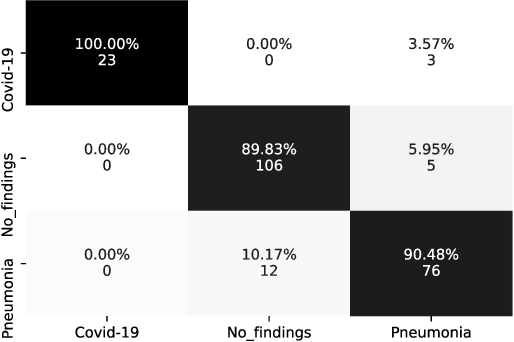
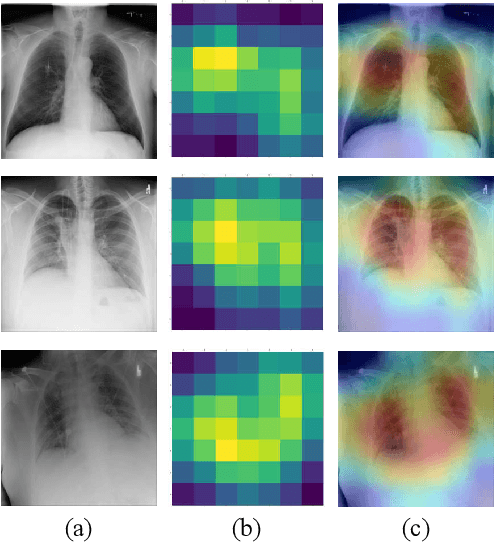
Abstract:The COVID-19 disease was first discovered in Wuhan, China, and spread quickly worldwide. After the COVID-19 pandemic, many researchers have begun to identify a way to diagnose the COVID-19 using chest X-ray images. The early diagnosis of this disease can significantly impact the treatment process. In this article, we propose a new technique that is faster and more accurate than the other methods reported in the literature. The proposed method uses a combination of DenseNet169 and MobileNet Deep Neural Networks to extract the features of the patient's X-ray images. Using the univariate feature selection algorithm, we refined the features for the most important ones. Then we applied the selected features as input to the LightGBM (Light Gradient Boosting Machine) algorithm for classification. To assess the effectiveness of the proposed method, the ChestX-ray8 dataset, which includes 1125 X-ray images of the patient's chest, was used. The proposed method achieved 98.54% and 91.11% accuracies in the two-class (COVID-19, Healthy) and multi-class (COVID-19, Healthy, Pneumonia) classification problems, respectively. It is worth mentioning that we have used Gradient-weighted Class Activation Mapping (Grad-CAM) for further analysis.
Diagnosis of COVID-19 Cases from Chest X-ray Images Using Deep Neural Network and LightGBM
Mar 27, 2022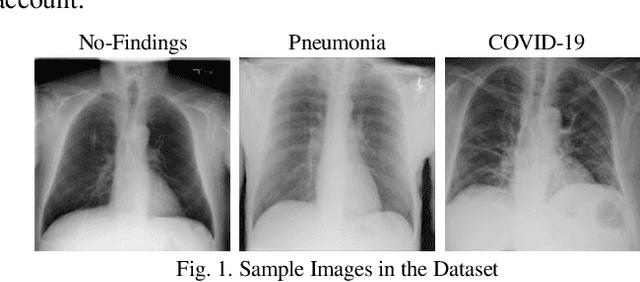

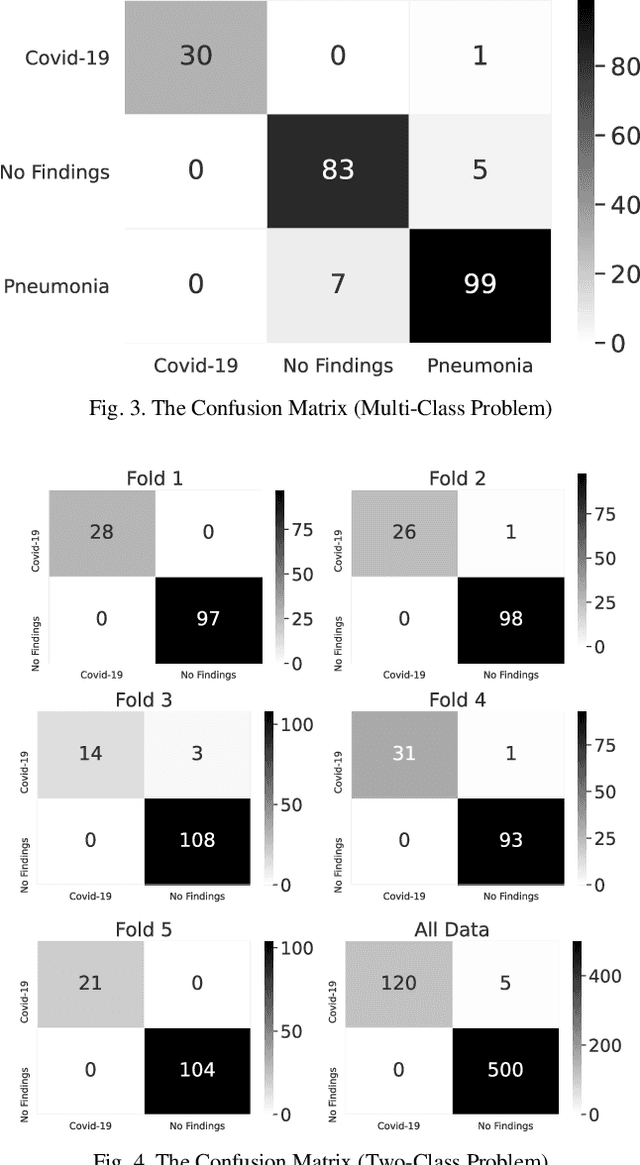
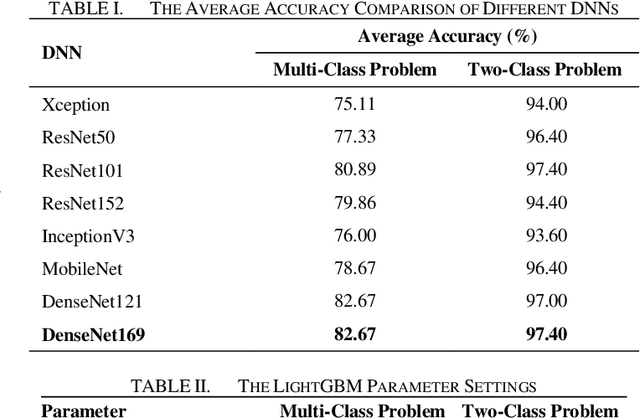
Abstract:The Coronavirus was detected in Wuhan, China in late 2019 and then led to a pandemic with a rapid worldwide outbreak. The number of infected people has been swiftly increasing since then. Therefore, in this study, an attempt was made to propose a new and efficient method for automatic diagnosis of Corona disease from X-ray images using Deep Neural Networks (DNNs). In the proposed method, the DensNet169 was used to extract the features of the patients' Chest X-Ray (CXR) images. The extracted features were given to a feature selection algorithm (i.e., ANOVA) to select a number of them. Finally, the selected features were classified by LightGBM algorithm. The proposed approach was evaluated on the ChestX-ray8 dataset and reached 99.20% and 94.22% accuracies in the two-class (i.e., COVID-19 and No-findings) and multi-class (i.e., COVID-19, Pneumonia, and No-findings) classification problems, respectively.
 Add to Chrome
Add to Chrome Add to Firefox
Add to Firefox Add to Edge
Add to Edge